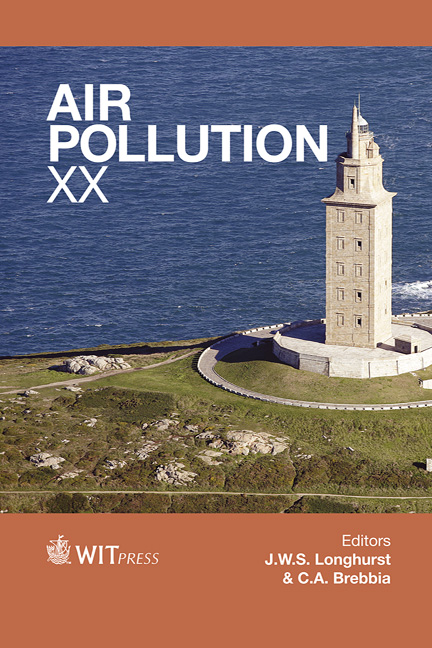Criteria Pollutant Dispersion Modeling Analysis For The Harir Early Production Facility, Kurdistan Region Of Iraq
Price
Free (open access)
Transaction
Volume
157
Pages
13
Page Range
33 - 45
Published
2012
Size
1,438 kb
Paper DOI
10.2495/AIR120041
Copyright
WIT Press
Author(s)
D. G. A. Ganjo
Abstract
Anticipated air emissions including NOx, SO2, H2S and CO resulting from flaring of gas for the Harir Early Production Facility, Northern Iraq (where this work was carried out) were followed up for impact assessment on existing ambient air quality via dispersion modeling. Due to the absence of upper layer meteorological data, stability class and mixing height for the ground layer for Iraq, prediction of the Ground Level Concentration (GLC) of emissions were made using the software of Industrial Sources Complex Short Term Model version 3 (ISCST3). ISCST3 software was used by default internationally for available ground layer mixing height and stability class. GLCs were calculated using meteorological data collected from the meteorological station at site during the monitoring period i.e. from 24 Sep. 2010 to 23 Oct. 2010. Air emissions were analyzed directly at the field using a portable gas analyzer Drager-Multiwarn, Germany. Topography of the studied area 10km2 around the project site (considered for impact assessment) is undulating in nature with contours varying from 700m to 1550m. Two assumptions were made while using the model; no dry and wet depletion of pollutants and the EPF location of 1550m. Maximum 24 hourly averages incremental GLCs of emissions during flaring were predicted for the grid size of 250m2 and 81 grids. The first maximum 50 values of 24 hourly incremental GLCs of emissions were then calculated. Contours for maximum 24 hourly averages incremental GLCs of air emissions were drawn at specified concentrations given for each and corresponding isopleth were depicted. It was evident from the modeling that maximum values of 24 hourly GLCs for H2S and SO2 severely surpassed Environmental, Health and Safety Guidelines for Onshore Oil and Gas Development of International Finance Corporation (IFC). Suitable mitigations and recommendations were made. Keywords: NOx, SO2, H2S, CO, EPF, ISCST3.
Keywords
NOx, SO2, H2S, CO, EPF, ISCST3.





